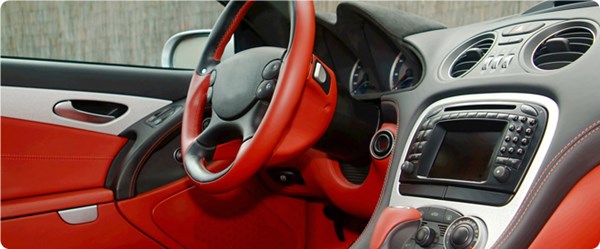TORONTO, Jan. 30, 2015 (GLOBE NEWSWIRE) -- Innovation and plastics are the name of the game in the automotive industry as car companies constantly strive to improve fuel efficiency, performance, safety, and style. Plastic innovation was a highlight at the 2015 Detroit Auto Show featuring fuel efficiency through light weighting and even a 3-D printed car!
Versatile, strong, and lightweight, plastics make up 50 percent of the volume of new cars but account for only 10-12 percent of the weight, so they help make cars lighter and more fuel efficient. For every 10 percent reduction in weight, fuel economy improves by 5-7 percent, saving you money at the gas pump and resulting in fewer C02 emissions.
Modern plastics – whether made to be resilient and flexible, soft and cushioned, or tough and shatter-resistant – play a critical role in helping to improve automobile safety. And auto designers rely on the versatility of plastics when designing today's stylish cars.
So where might plastics be playing a role in your vehicle? Here's just a few examples:
Body & Exterior
Foam-filled body structures: Filling thin-walled, hollow structures in vehicles (such as the areas between your car's windows, door panels, bumpers, or frames) with rigid, plastic foam can improve the structural strength of the vehicle without adding significant weight.
Plastic body panels & bumpers: Plastic body panels and front and rear bumpers are designed to absorb impact energy in the event of a crash, so that much of the energy is kept away from the occupants. These structures, when made of plastic materials, can weigh as much as 50 percent less while absorbing four to five times more energy than steel or aluminum.
Windows & headlights:
Plastic windshields and headlamps are helping drivers see more clearly while enhancing design options. Windshields are shatter-resistant thanks to a thin layer of plastic sandwiched between two layers of glass, which is lighter and stronger than tempered glass. Headlamps are also lighter and more shatter-resistant thanks to the use of plastic.
Plastic paint film:
Plastic paint film is slowly replacing traditional automotive paint on some parts of new cars. 15 times thicker than traditional paint, this paint film is more resistant to scratches, chips, and UV degradations, and retains a high-gloss, showroom shine longer than traditional paint.
Interior:
Safety features: Interior safety features such as seat belts and air bags are made of materials such as tough, tear-resistant nylon to help protect you and your passengers in the event of a collision.
Today's bottles, tomorrow's upholstery: Some manufacturers are using post-consumer recycled plastic and plant-based plastics in innovative interior applications, including upholstery and foams used to cushion passenger seats.
Powertrain & Chassis:
Plastic fuel lines & tank: Plastic fuel tanks have several advantages over traditional steel fuel tanks that are prone to corrosion from fuel and exterior elements like dirt, salt, and road chemicals. A plastic fuel tank made of high-density polyethylene (HDPE) is inert to the corrosive environments inside and outside of the tank. A plastic fuel tank also has a key safety feature: since it can be manufactured as a single part without soldered seams, there are no seams to fail in a collision.
Plastic housings for electronics & braking systems:
These plastic housings protect electronics and brake systems from corrosion, heat, and environmental damage to help keep key vehicle systems working smoothly.
Hybrid & electric vehicle batteries:
Alternative energy vehicles incorporate advances in battery technology using new-generation lithium-polymer batteries that are smaller and run cooler. So where are the plastics in these batteries? For lithium-polymer, read "lithium-plastic." Lithium-polymer batteries are widely used in cell phones today, and tomorrow they may power your plug-in car.
Today's intelligent plastics are vital to the modern world. These materials enhance our lifestyles, our economy and the environment. For more information visit www.intelligentplastics.ca
A photo accompanying this release is available at: http://www.globenewswire.com/newsroom/prs/?pkgid=30410
Plastics in Motion: Plastics help make today's cars possible
| Source: Canadian Plastics Industry Association
